Zaporizhzhya NPP: Occupiers capture, nuclear terrorism

The Russian occupiers, their weapons and equipment at the Zaporizhzhya nuclear power plant are an act of Russian nuclear terrorism against Ukraine, Europe and the whole world. According to a report by the International Atomic Energy Agency, “The situation in Ukraine is unprecedented. For the first time, an armed conflict continues on the territory of a large nuclear facility.” Russia established control over the nuclear plant, turning it into a military base, placing its military, weapons and replacing the terrain there, as well as shelling from its territory cities on the other bank of the reservoir - Nikopol and Marganets.
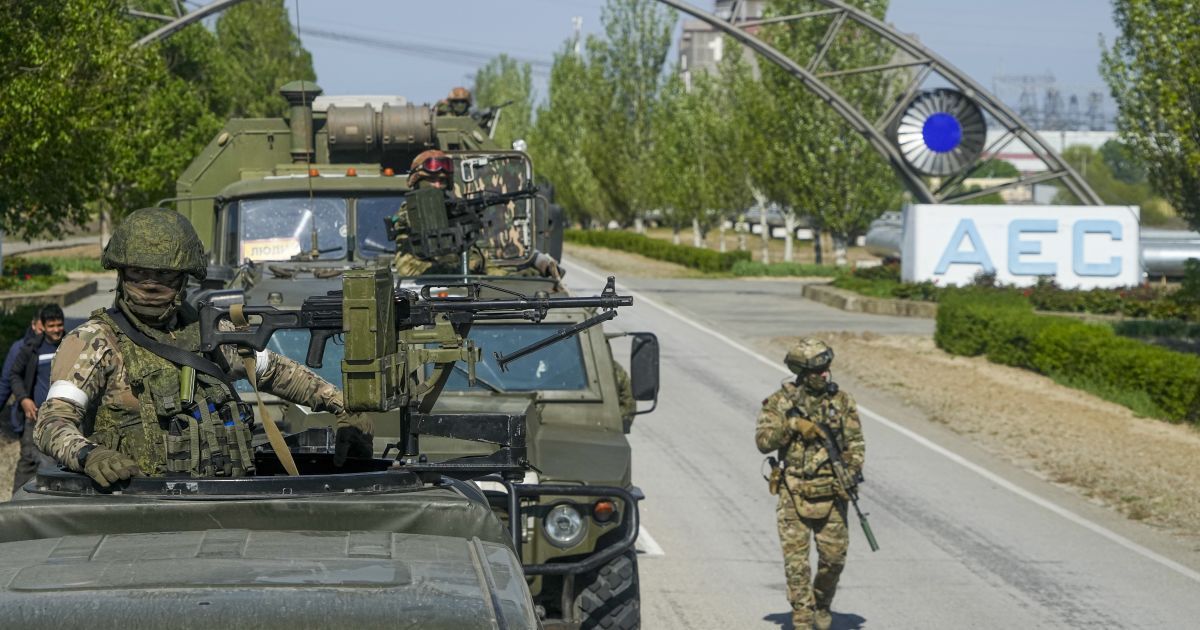
Due to Russia's military activities, the power supply of the station's own needs from the Ukrainian side was periodically interrupted, which threatened the cooling of the nuclear reactors.
Russian corporation Rosatom announced the appropriation of the NPP, trying to organize electricity supply from it to the occupied territories. Ukrainian personnel of the station were subjected to kidnapping, murder and inhuman treatment, which increased the risk of nuclear incidents and accidents. IAEA staff were present at the station, but negotiations on the demilitarization of the territory did not succeed.
The explosion of the Kakhovskaya hydroelectric power plant on the Dnieper, which occurred on June 6, 2023, is an additional threat to the NPP, as it may lead to problems with its cooling.

Zaporozhye Nuclear Power Plant, located in the southeast of Ukraine, is the largest nuclear power plant in Europe and is among the 10 largest in the world. It was built in Soviet times near the city of Energodar, on the southern bank of the Kakhovsky reservoir on the Dnieper River. It is operated by the state-owned NNEC Energoatom, which also operates the other three nuclear power plants of Ukraine.
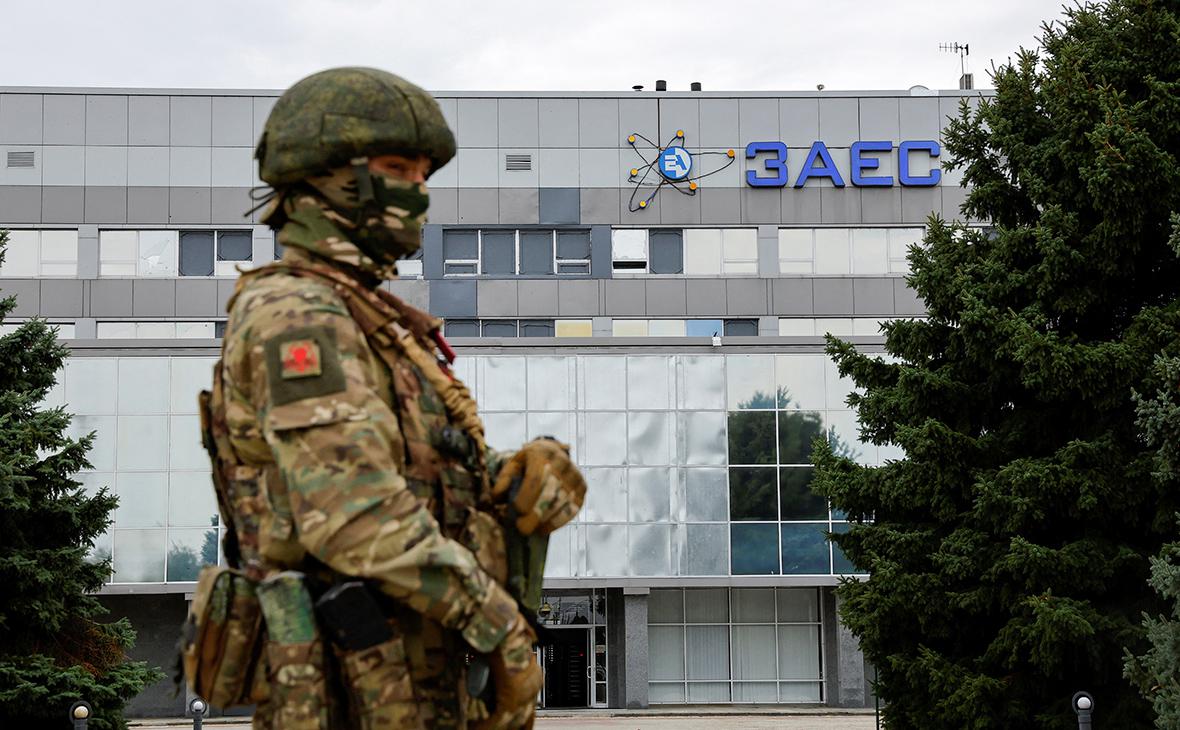
The station has 6 VVER-1000 light-water pressurized nuclear reactors, each running on 235U (Enriched Uranium) fuel and generating 950 MW, with a total output capacity of 5700 MW.
The first five power units were successively put into the grid between 1985 and 1989, and the sixth was added in 1995. The plant produces almost half of Ukraine's electricity generated from nuclear power, and more than a fifth of the total electricity produced in Ukraine. Nearby is the Zaporizhzhya CHP.
To reduce the risk, after the start of the Russian invasion of Ukraine on February 24, 2022, Energoatom stopped 5 and 6 power units, leaving 1 to 4 power units in operation.
➤ On March 3, 2022, at 23:28 local time, a column of 10 units of Russian armored vehicles and two tanks approached the power plant. The battle began at 12:48 p.m. on March 4, when Ukrainian forces fired anti-tank missiles. Russian forces responded with a variety of weapons, including jet propelled grenades.
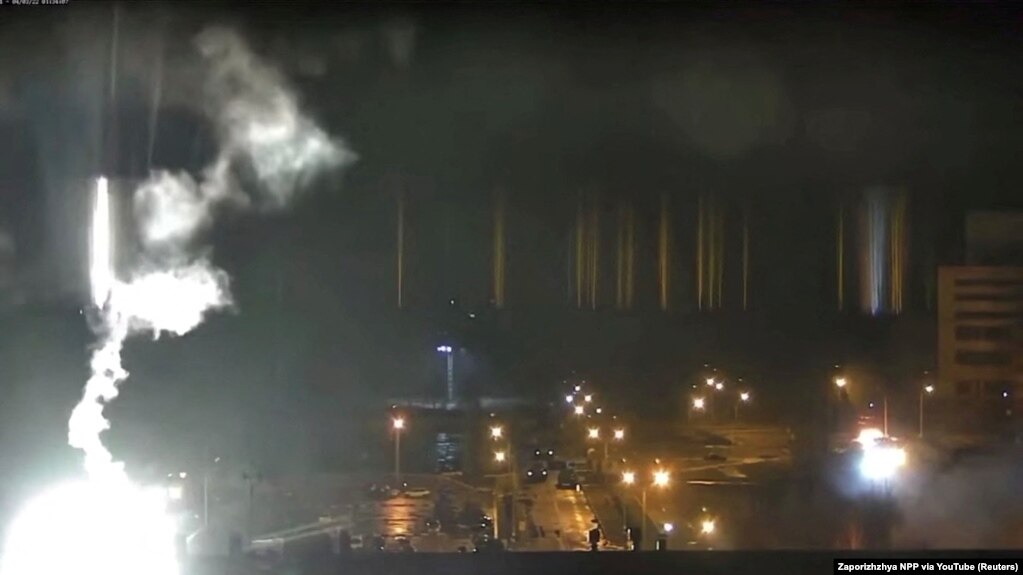
During approximately two hours of heavy fighting, a fire broke out in the training center outside the main complex, which was extinguished at 6:20 a.m., although other sections around the station sustained damage. The fire did not affect the safety of the reactor or any major equipment. The station lost 1.3 GW of power.
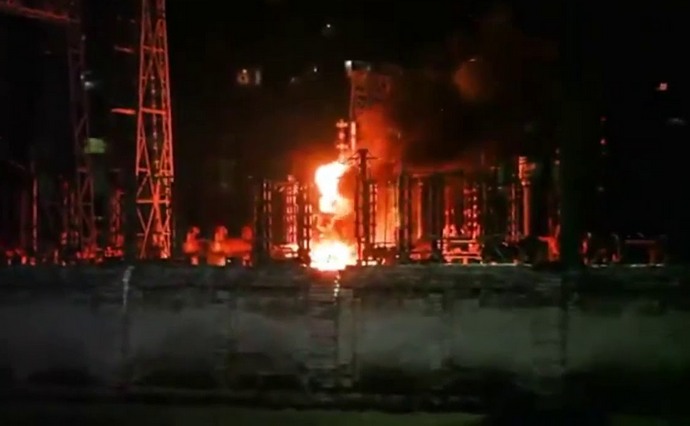
“The passageway was destroyed, the training building was completely smashed, the cars of the personnel were hit in the parking lot, there was not a single surviving window in the administrative building, holes from shells.
The office of the director, the chief engineer and my office were destroyed, the sleeves were lying everywhere, and there were Russian soldiers everywhere with machine guns checking the passports of the personnel...
For the first time in the world history of nuclear power, my staff performed complex technical switches under direct fire and ensured the nuclear safety of the facility and preserved the generation.”
— Oleg Dudar, Head of the Operational Unit of the NPP
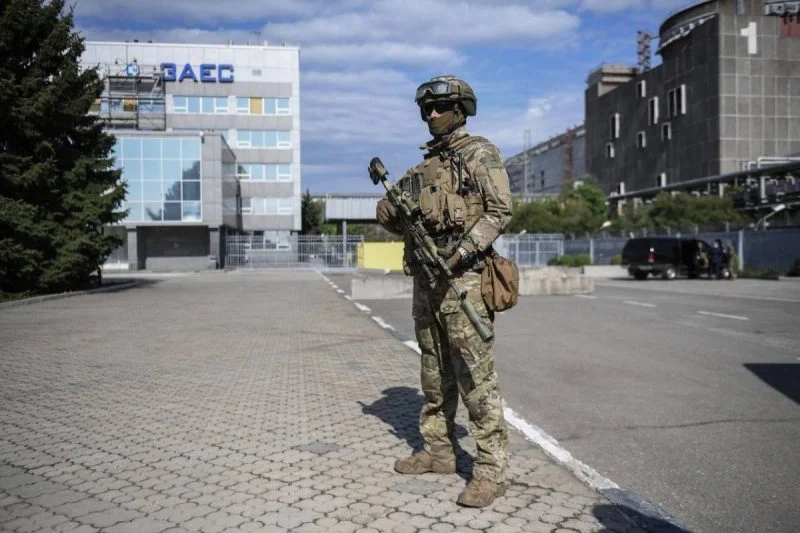
➤ According to the Ukrainska Pravda report of March 12, the Russian authorities informed the management of the station that the latter now belongs to the state nuclear power company of Russia — Rosatom. The NPP continued to operate and provide data, including from the remote monitoring system, to the IAEA. It continues to be operated by Ukrainian personnel under Russian control.
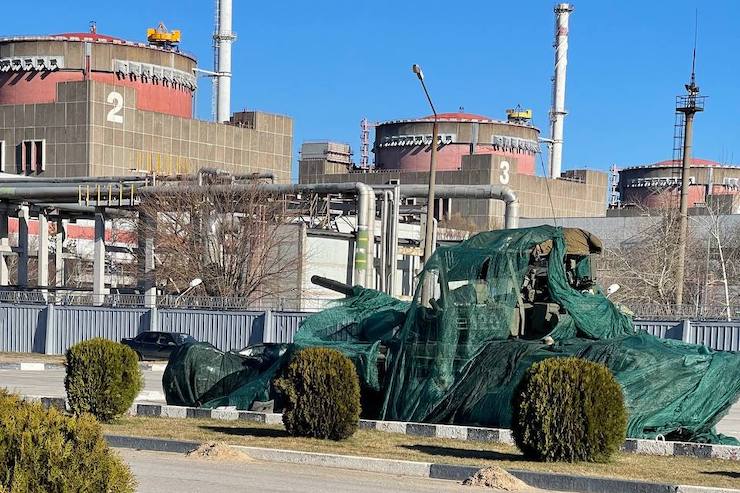
➤ On April 26, 2022, two Russian cruise missiles flew at low altitude over the site of Zaporizhzhya NPP in the direction of Zaporizhia. In Energoatom, this event was classified as nuclear terrorism, exposing the world to the danger of a repeat nuclear disaster.
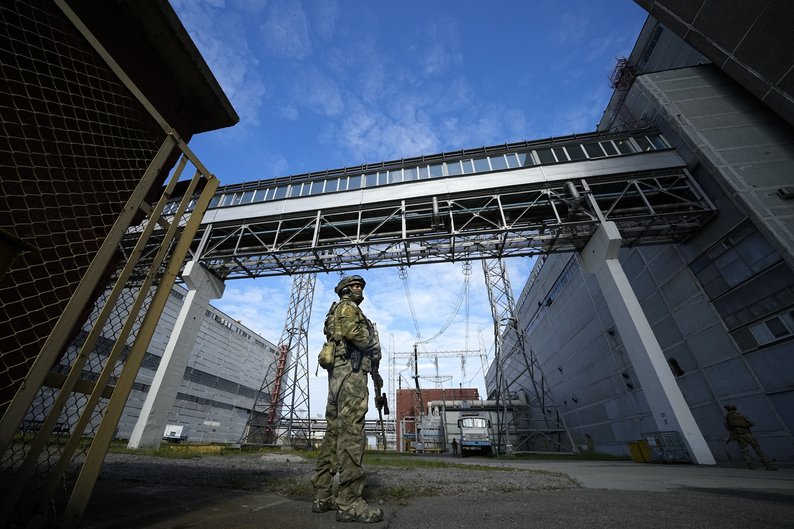
➤ Since May, it was not possible to deliver coal to Zaporizhzhya TPP, so the heat and water supply to the power producers was provided by the NPP thanks to the transfer of individual units of the station to a state of hot stop. This state of affairs lasted for months, but was interrupted by repeated breakdowns of energy infrastructure.
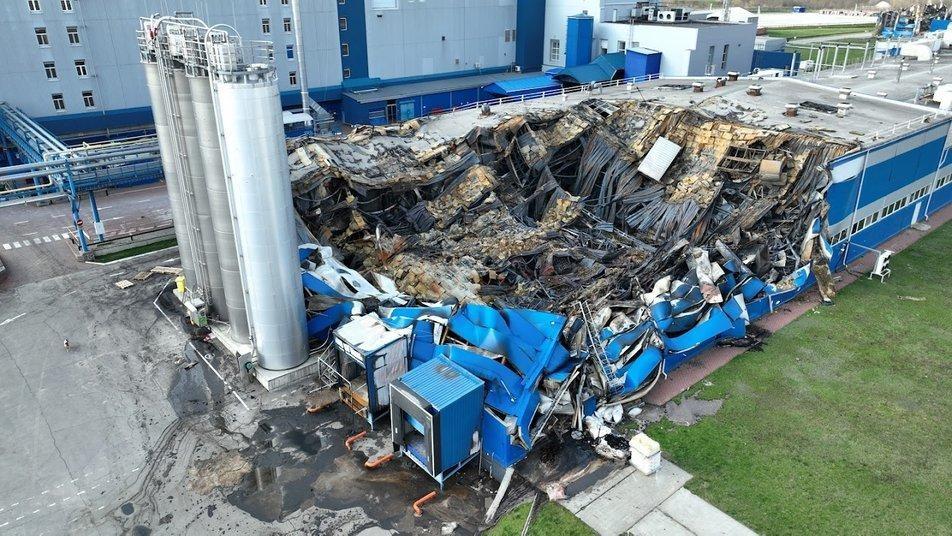
➤ On July 5, 2022, The Wall Street Journal reported that Russian troops have equipped a military base in the NPP complex, deploying the heavy self-propelled rocket system of the BM-30 “Smerch” salvo fire.
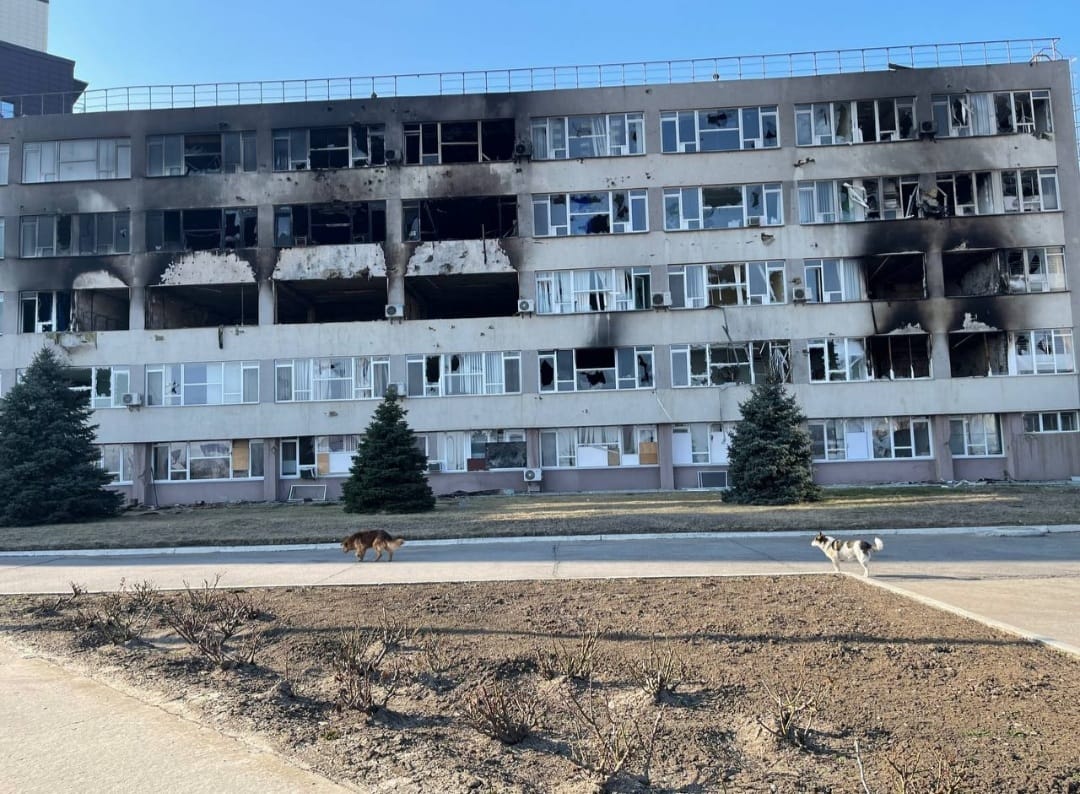
➤ August 2022
On August 3, 2022, IAEA Chairman Rafael Grossi expressed serious concern about the physical integrity of the station, whether all necessary repairs and maintenance had been carried out, and the safety of nuclear material. The mission for the inspection of the NPP was planned by the IAEA, pending the approval of the Ukrainian and Russian parties, as well as the permission of the UN.
Energoatom opposed the IAEA visit through the territory occupied by Russia, since such a visit would legitimize the presence of the occupying country there. Instead, one of the Russian-controlled officials invited the IAEA for propaganda purposes — to show how the Russians guarded the facility and the Ukrainians attacked it.
At 14:30 on August 5, Russian forces fired near the industrial site of the nuclear power plant and hit the high-voltage 330 kV communication line of the Zaporizhzhya TPP.
On August 6, 2022, the IAEA reported that one of the three remaining reactors of the nuclear power plant was disconnected from the grid and the emergency protection system was operational.
On August 8, damage to the station was reported. Ukrainian authorities said Russian shelling damaged three radiation sensors and one worker was hospitalized; Ukrainian President Volodymyr Zelensky accused Russia of committing “nuclear terrorism”.
UN Secretary-General Guterres said that “any attack on a nuclear power plant is suicide”, calling for IAEA inspectors to be granted access. Energoatom called for the creation of a demilitarized zone around the nuclear power plant with the deployment of international peacekeepers.
On the same day, the Major General of the Russian Armed Forces, commanding the Russian garrison at the NPP, stated literally: “There will be either Russian land or scorched desert.”
On August 9, the head of Energoatom said that Russia plans to disconnect the station from the Ukrainian network and connect it to the Russian one.
On August 11, at the initiative of Russia, a meeting of the UN Security Council was convened to discuss the situation at the NPP. The Russian delegation said that allegedly Ukrainian forces on August 5 used heavy artillery to shell the station, and on August 6 attacked it with cluster munitions; at the same time, according to supported the visit of the IAEA. The Ukrainian delegation said that Russia attacked the nuclear power plant, used the station to shell Ukrainian cities, and also supported the visit of IAEA representatives through Ukraine-controlled territory.
August 14, V. Zelensky accused Russia of deploying troops at stations to shell the cities of Nikopol and Marganets through the Kakhovsk reservoir. A video released in early September confirms that Russian RSVs are firing from the territory of the Zaporizhzhya NPP, using it as a nuclear shield.
In the second half of August, a video appeared showing Russian military trucks parked in the building where the turbines of the power plant are located.
On August 18, the State Nuclear Regulatory Inspectorate of Ukraine limited the operation of power units 1 and 2 of the NPP, allowing the operation of power unit 1 only in “fuel overload” states — “cold stops”, and power unit 2 — in a state of “cold stops”.
On August 19, after a telephone conversation between French President Emmanuel Macron and Putin, Russia agreed to allow IAEA inspectors access to the Zaporizhzhya station from Ukraine-controlled territory. For verification, it was still necessary to agree on a temporary ceasefire around the facility.
Also on August 19, the chairman of the special committee on the defense of the United Kingdom, Tobias Ellwood, said that any deliberate damage to the Zaporizhzhya NPP, which could cause a radiation leak, would mean the onset of the terms of Article 5 of the North Atlantic Treaty, according to which an attack on a state A NATO member is attacking them all. The next day, United States Congressman Adam Kinzinger stated that any radiation leak would result in the death of people in NATO countries, which would automatically trigger Article 5.
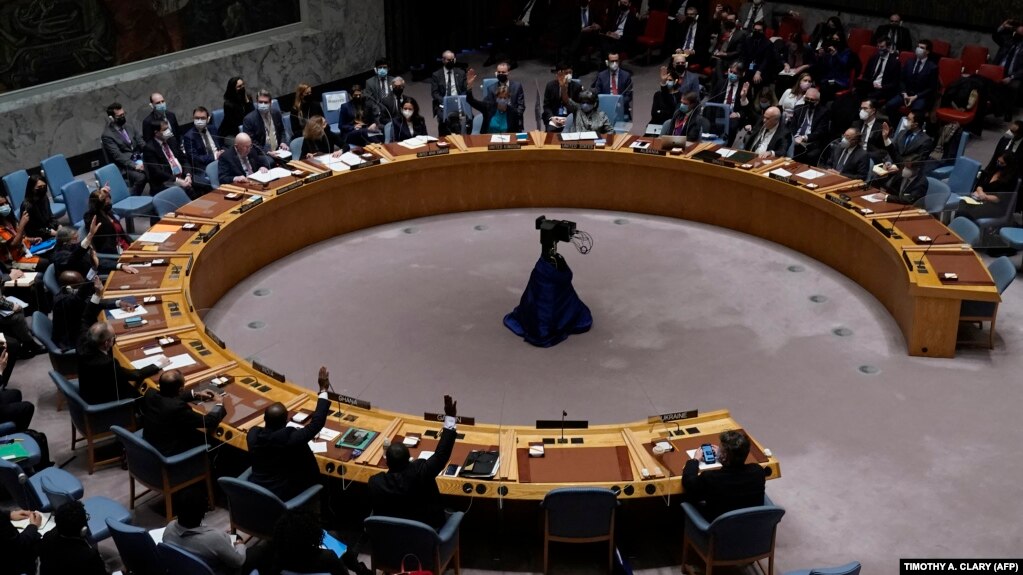
On August 23, against the background of numerous Russian provocations, another meeting of the UN Security Council was held on the crisis at the Zaporizhzhya NPP.
On August 25, due to fires on the ice shafts of the Zaporizhzhya TPP, the last (fourth) line of communication of the NPP with the power system of Ukraine was disconnected twice. Three other lines had been damaged by enemy shelling earlier. As a result, the two working power units of the station were disconnected from the network, the actions of the invaders caused the complete shutdown of the NPP from the power grid — for the first time in the station's history. According to Energoatom, the automation and security systems of the station were working properly. By the end of the day, the NPP was reconnected to the network.
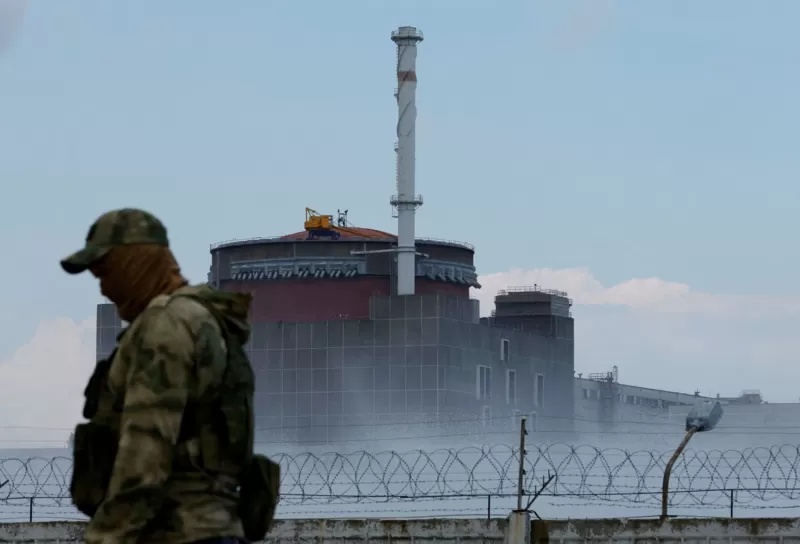
On August 27, there were shelling in the areas of Special Corps No. 2 and the overpass between the Special Corps and Power Unit No. 2. There were no reports of changes in the radiation status.
According to Raphael Grossi from August 29, the IAEA delegation under his leadership went to Zaporizhzhya NPP. It is officially called the IAEA Support and Assistance Mission to Zaporizhzhya (ISAMZ).
The team consisted of 13 experts from “mostly neutral countries”. Russia blocked a proposal aimed at strengthening the Treaty on the Non-Proliferation of Nuclear Weapons, objecting to the clause on Ukraine's control over the NPP. The Institute for the Study of War (ISW) concluded that Russia is trying to manipulate, discredit, and delay the IAEA mission much like Iran usually does.
➤ September 2022
Simultaneously with the arrival of IAEA specialists on the route Kyiv — Zaporizhzhia — Energodar, shelling by Russian troops intensified.
On September 1, at 4:57 a.m., as a result of mortar shelling of the power plant site, emergency protection was activated and the working power unit No. 5 was turned off.
In addition, the occupiers damaged the backup power line of their own needs of the 330 kV NPP, as a result of which there was a de-energization of the non-working power unit No. 2 with the launch of diesel generators that feed the reactor zones, the holding pools, and the spent nuclear fuel site. Power unit No. 6 continued to operate in the Ukrainian energy system and at the same time fed its own needs of the NPP. Power unit No. 5 is connected to the power grid at 13:10 on September 2.
Arriving the same day at the NPP, some of the IAEA staff remained there for several hours, and some retained their presence indefinitely.
As a result of continuous shelling by Russian troops, at 19:35 on September 3, power unit No. 5 was again disconnected from the power grid.
On September 5, as a result of a fire related to the shelling, the last 330 kV power line was turned off, and then the power unit No. 6 was unloaded and unloaded, which fed the station's own needs. Thus, for the second time, the NPP was completely disconnected from the power grid.
On September 6, the third meeting of the UN Security Council was held due to the situation at the NPP, which was initiated by Russia. At the same time, IAEA Director Rafael Grossi presented a report on radiation safety in Ukraine, which reflected data on the visit of the mission to the Zaporozhye nuclear power plant.
Subsequently, the Ukrainian side responded with large-scale exercises in Zaporizhia, Dnipropetrovsk region and Kherson region. Legend — radiation leak from Zaporizhzhya NPP. This has already happened after the Russians blew up the dam of the Kakhovskaya hydroelectric power plant, which posed an additional danger due to the sharp drop in the level of them in the Kakhovsky reservoir.
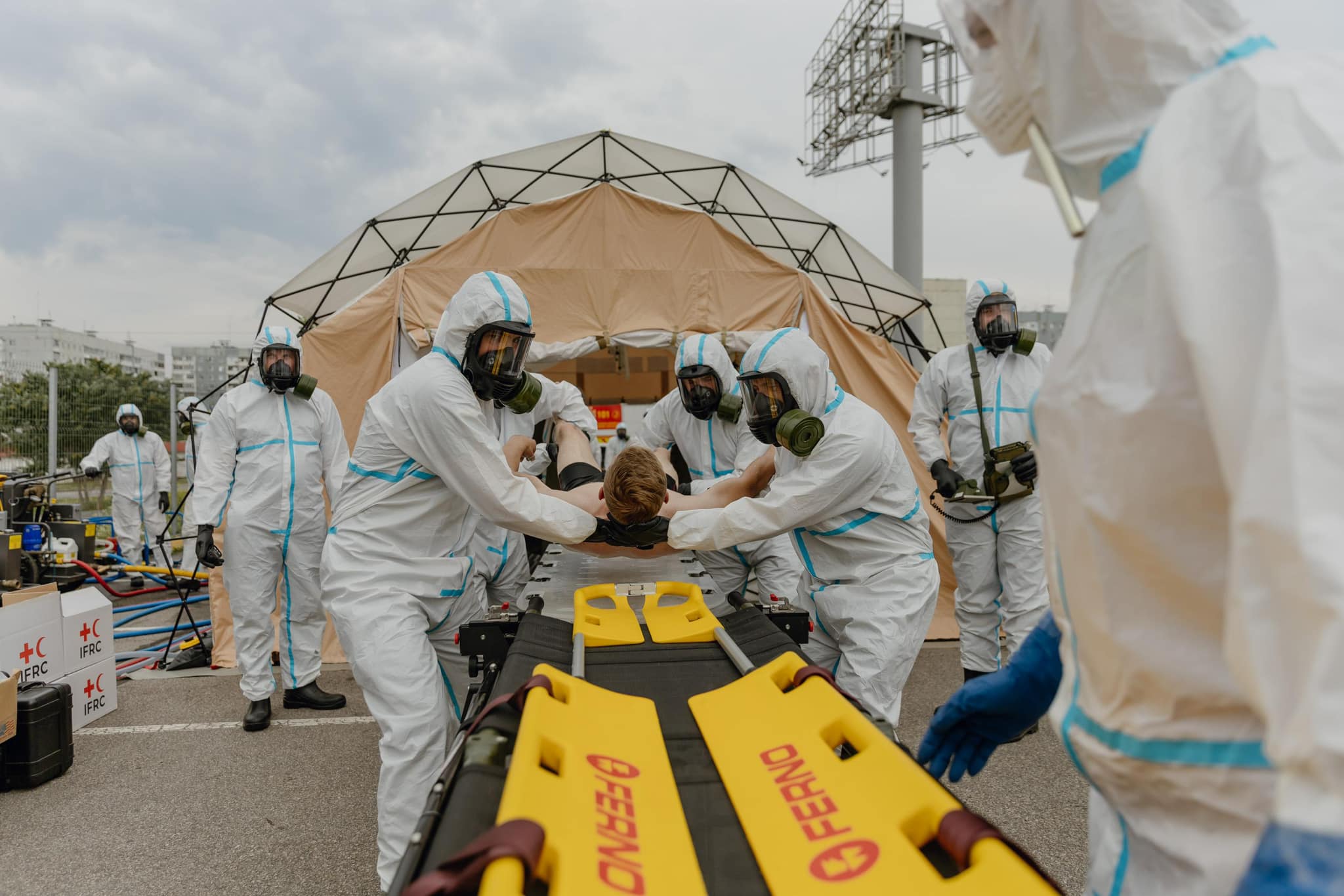
On June 29, 2023, the Minister of Internal Affairs Igor Klymenko wrote about it on his Facebook page:
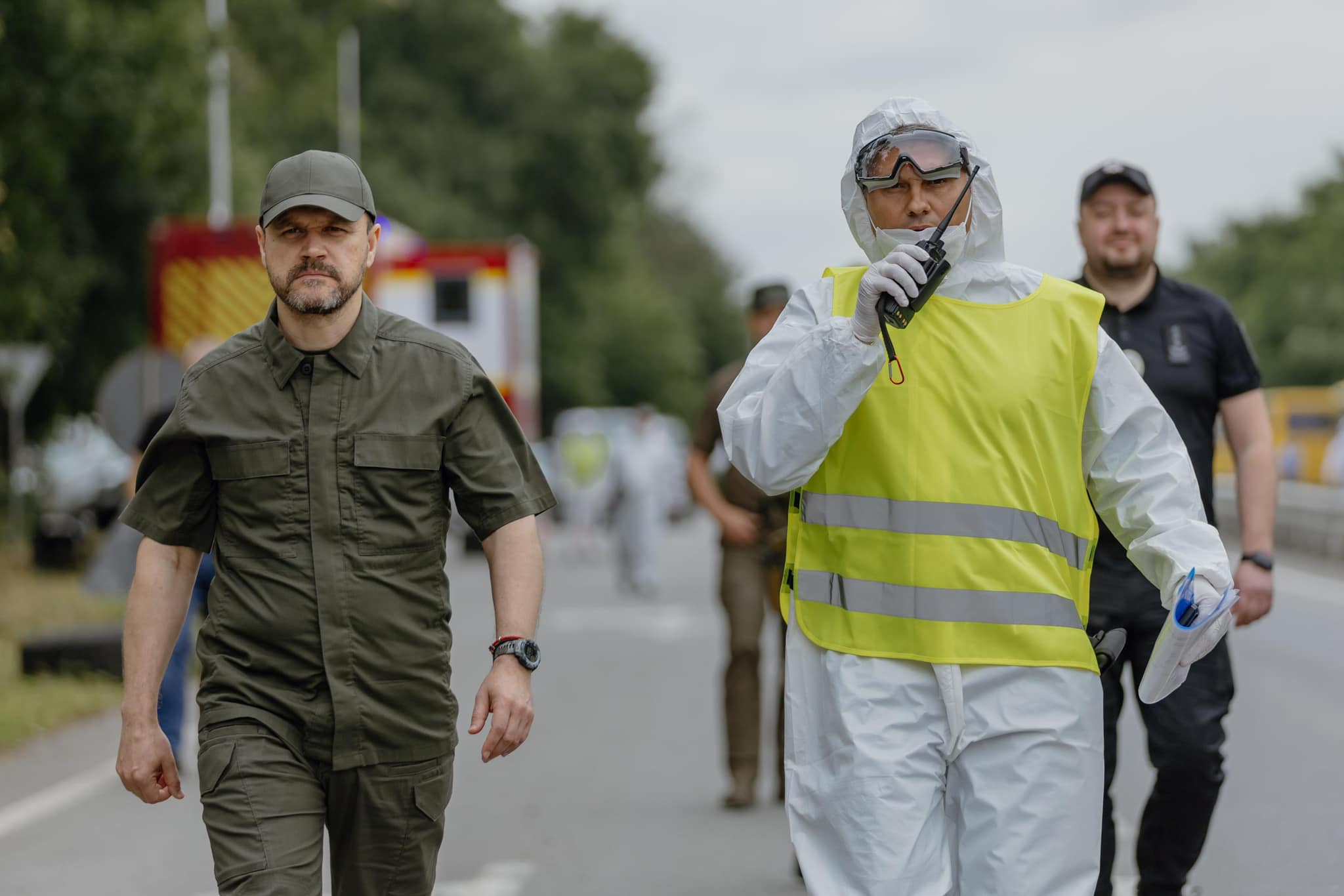
Today at five in the morning, according to the alert system of Energoatom and the Ministry of Energy, all personnel of the relevant services were raised on alert.
We conduct training in Zaporizhia, Dnipropetrovsk region and part of Kherson region, close to real events. The legend is a leak of radiation from one of the power units of the Zaporizhzhya nuclear power plant.
About 8000 people are involved: local authorities, law enforcement officers, volunteers, doctors and representatives of all services of state authorities responsible for the civil protection system.
About 350 units of special transport and 400 buses were involved to evacuate the population.
In each settlement there are evacuation teams, which consist of representatives of local authorities and the National Police of Ukraine. They ensure the movement and accompaniment of our citizens to safe areas.
There are also about 200 additional National Police patrols on the roads so that there are no congestion and evacuation vehicles can move smoothly.
We understand that the Zaporizhzhya nuclear power plant occupied by the enemy today represents a huge danger from a man-made point of view, especially for citizens of Dnipropetrovsk, Zaporizhzhya and Kherson regions.
In the worst case scenario, about 300 thousand residents of Dnipropetrovsk and Zaporizhzhia are subject to mandatory evacuation.
We are working on all possible scenarios. For example, that a radioactive cloud can go further, to any region of our country.
Within the framework of training activities, control and sanitary posts are deployed to check the transport leaving the settlements. There is a technique for measuring the radiation background, also carrying out inspection and processing of cars and evacuated people.
Each apartment, each private house needs to be checked whether there are few mobile people left there, they need special medical transport. We are working on these needs together with the Ministry of Health.
The enemy is nearby and we understand that we must be prepared for any of his intentions.
We will come to the rescue in time, the authorities will respond to any challenges.
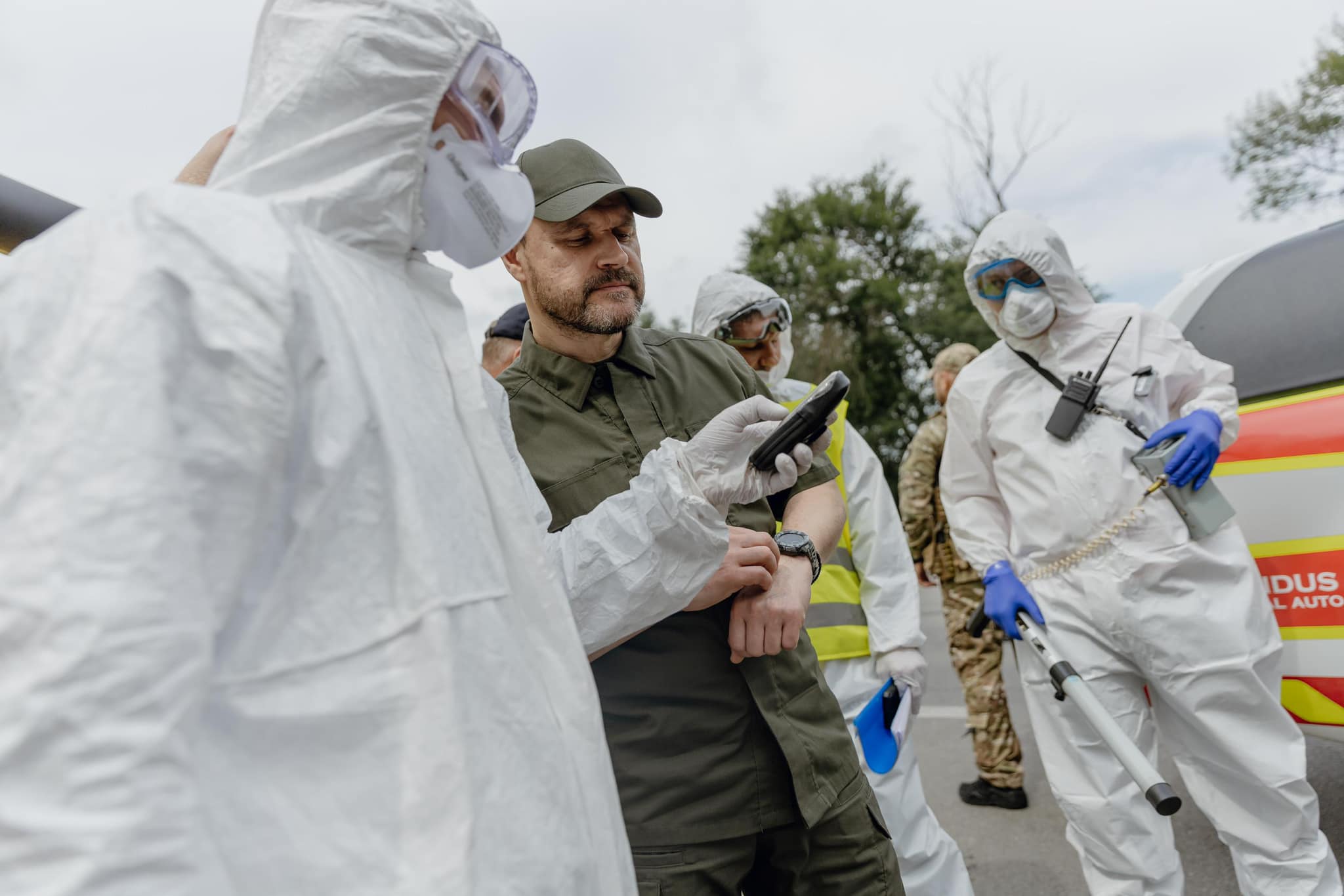

Department of Communications of the Ministry of Internal Affairs of Ukraine






